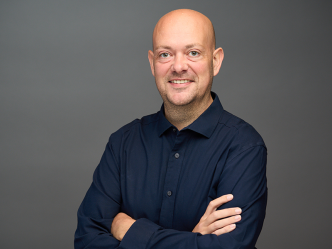Many Americans don’t realize the significant number of autistic adults across the country who regularly struggle with suicidal thoughts and self-harming behaviors.
Compared to the general population, autistic people are up to nine times more likely to think about suicide, up to five times more likely to attempt suicide and more than seven times more likely to die by suicide, according to Dr. Teal Benevides, an associate professor in the Department of Occupational Therapy in the College of Allied Health Sciences at Augusta University.
“There is a shocking number of individuals on the spectrum who are at risk for suicide, suicidal ideation and self-harm,” Benevides said. “There’s a lot of literature that suggests that many adults on the spectrum experience anxiety and depression, and so those co-occurring mental health conditions are very prevalent and can contribute to risk for suicidal thoughts.”
As autistic children grow into adulthood, Benevides said many young adults on the spectrum face various risk factors for suicide.

“One of the things that people don’t recognize is that individuals on the spectrum want to be and desire to be a part of society,” she said. “They want to have friendships. They want to have relationships. They want to have a job. They want to be able to be doing things that we all value. However, sometimes those things are harder to do, given the characteristics of autism.”
Those barriers can sometimes contribute to depression and suicidal thoughts and behaviors, Benevides said. “The experience of feeling excluded throughout a lifetime, and possibly experiencing bullying and marginalization, contributes to some pretty significant mental health concerns,” she said. “As a result, the risk of suicide is higher, as well as suicidal ideation and suicide attempts are also higher. But it doesn’t have to be that way.”
Suicide prevention strategies
Benevides, along with Dr. Stephen Shore, an autistic educator and clinical assistant professor at Adelphi University, co-leads the Autistic Adults and other Stakeholders Engage Together (AASET) team. Benevides and Shore are co-investigators on a national study funded by a $9 million award from the Patient-Centered Outcomes Research Institute (PCORI) that will compare the effectiveness of two suicide prevention interventions for autistic individuals.
Dr. Brenna Maddox, an assistant professor at the University of North Carolina at Chapel Hill’s Department of Psychiatry, is a principal investigator of the national study that will involve four health systems across the United States.
The study will be co-led by Dr. Shari Jager-Hyman, an assistant professor of psychiatry in the Perelman School of Medicine at the University of Pennsylvania. The University of North Carolina TEACCH Autism Program and the Carolina Institute for Developmental Disabilities, along with the Children’s Hospital of Philadelphia, the Kennedy Krieger Institute in Baltimore and the Nationwide Children’s Hospital in Columbus, Ohio, will enroll a total of 1,500 autistic individuals between the ages of 15-24 who screen positive for suicidal ideation.
From there, the study will compare the effectiveness of two evidence-based suicide prevention strategies adapted for autistic individuals by Maddox, Jager-Hyman and their team. The two evidence-based suicide prevention strategies are referred to as the “Safety Planning Intervention-Autism Spectrum Disorder” (SPI-ASD) and “SPI-ASD plus structured follow-up care” (SPI-ASD+).
“SPI-ASD is a brief intervention that results in an individually tailored plan designed to lower the short-term risk of suicide in autistic youth,” Maddox said in a recent press release from the University of North Carolina School of Medicine. “During a single session, a clinician works collaboratively with the autistic individual to develop a list of warning signs that signal the need to use the safety plan; sources of distraction, comfort, and support; reasons for living; and available emergency services. Part of safety planning is also discussing how to increase safety by reducing access to lethal means.”
Clinicians who deliver SPI-ASD+ will implement SPI-ASD, followed by at least two brief contacts either by phone or text, based on the autistic person’s preference.
According to the press release, the structured follow-up communication includes a brief risk assessment and mood check; a review, and if needed, revision of SPI-ASD; and support related to outpatient mental health treatment initiation.
The research team will track multiple outcomes of interest across one, six and 12-month assessments with autistic participants.
Participants will be asked about suicidal thoughts and behaviors, engagement in mental health care, quality of life, social well-being, skills to manage suicidal thoughts and behaviors, access to lethal means, safety plan use and the use of acute care services for suicidality, according to Maddox.
“A significant strength of this study is the authentic involvement of autistic individuals and other key stakeholders throughout the research process,” Maddox said. “Dr. Jager-Hyman and I had the amazing opportunity to partner with AASET to develop the study proposal, and stakeholder engagement will be a core component across all phases of the study.”
Ensuring that autistic individuals were involved in the development of the study’s proposal was crucial because autistic people have historically been disenfranchised from the research process, Benevides explained.
“The lack of involvement of autistic people in research about autistic people is a moral issue,” Benevides said. “If you’re going to develop an intervention for a particular community, it’s essential that they are involved and contribute to that process.”
It is important that such valuable research is directed by the community it is meant to serve, Benevides said.
“From an ethical perspective, we need to make sure that the research that goes on in autism reflects the priorities of autistic people,” Benevides said. “In partnership with my colleague, Stephen Shore, who is an autistic adult, we embarked on a journey to really develop a team of autistic people, as well as caregivers of autistic people, to inform research teams what the priorities are for autism research and health care.”
A collaborative study
The project and research work has been successful because it has been a collaborative effort, Shore said.
“We’re going to build on the work we initiated with AASET and that will directly impact how autistic people will be involved in this research,” Shore said in the press release.
AASET will be collaborating with Maddox, Jager-Hyman and the entire research team to ensure autistic people are meaningfully engaged throughout the study. Roles include co-developing and co-delivering the clinician training, assisting with data collection and analyses, serving on an advisory council and disseminating findings.
Autistic individuals, family members, clinicians, public health leaders and representatives from healthcare insurance organizations, autism advocacy organizations and suicide prevention organizations will also serve on a multi-stakeholder advisory board to discuss study progress and plan for dissemination from the beginning.
Researchers plan to begin enrolling autistic participants by late 2022, Benevides said.
“What I love about this project was that Dr. Maddox and Dr. Jager-Hyman were interested in developing this collaborative study. AASET was funded by PCORI back in 2017,” she said. “That two-year project helped identify research priorities of the autism community. Our team continued to meet and ask, ‘Now that we have these research priorities, what else can we be doing?’”
Benevides said the group shared their work with autism researchers who also have the background and training as intervention researchers in order to stimulate research on the priorities.
This national, five-year study could have a dramatic impact on autistic adults and teens across the country who regularly struggle with suicidal thoughts, Benevides said.
“We need to be thinking about how we, as a society, can be framing autism differently to reduce stigma, but we also need evidence-based strategies to prevent suicides,” Benevides said. “Our immediate goal with this study is to prevent those suicide attempts.”
 Augusta University
Augusta University




